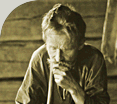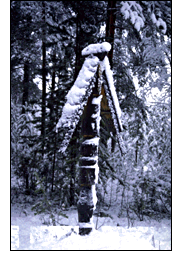 The
shores of Lakes Kuivajärvi and Hietajärvi have been inhabited since
the late 1700s. The first inhabitant was a man who crossed the border
from Tunkua in Russian Karelia to escape the Czar's 25-year military
service. Later, the man took on as his maid and hired hand at Hietajärvi
Toarie Lesonen from Latvajärvi, or Lapukka, and Tomenttei Sikov from
Suikujärvi. The two married, moved to the shore of Lake Kuivajärvi
and started the village of the same name. Tomenttei took the name
Lari Huovinen and became the forefather of the Huovinens of Hietajärvi
and Kuivajärvi. The
shores of Lakes Kuivajärvi and Hietajärvi have been inhabited since
the late 1700s. The first inhabitant was a man who crossed the border
from Tunkua in Russian Karelia to escape the Czar's 25-year military
service. Later, the man took on as his maid and hired hand at Hietajärvi
Toarie Lesonen from Latvajärvi, or Lapukka, and Tomenttei Sikov from
Suikujärvi. The two married, moved to the shore of Lake Kuivajärvi
and started the village of the same name. Tomenttei took the name
Lari Huovinen and became the forefather of the Huovinens of Hietajärvi
and Kuivajärvi.
According to some accounts, Toarie was Arhippa Perttunen's sister.
She was a significant "Kalevala singer" although only four of her
poems have been recorded. Daniel Europaeus, who was sent by Lönnrot
to collect poetry, tells of his meeting with Toarie in Hietajärvi
in December 1845:
There was an old woman whom I had a very hard time getting
to sing; but her one word was worth more than dozens of words
from anyone else.
Europaeus found out from Toarie that Lemminkäinen killed Joukahainen,
the Master of the North, in the Wedding of the North. In his preface
to the first edition of the Kalevala, Lönnrot 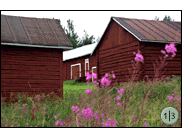 had
already speculated that Joukahainen might belong to the people of
the North and had now received confirmation of this fact from Europaeus.
On the strength of this discovery, Europaeus suggested that Canto
30 of the Kalevala, in which Joukahainen is sung of and is clearly
still alive, should be put before the Wedding Song of the North
or even before the song of the Meager Youth of Lapland, because
"this Lapp was none other than Joukahainen." had
already speculated that Joukahainen might belong to the people of
the North and had now received confirmation of this fact from Europaeus.
On the strength of this discovery, Europaeus suggested that Canto
30 of the Kalevala, in which Joukahainen is sung of and is clearly
still alive, should be put before the Wedding Song of the North
or even before the song of the Meager Youth of Lapland, because
"this Lapp was none other than Joukahainen."
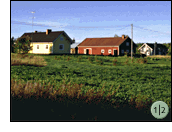 Lönnrot
did not accept Europaeus' view that Joukahainen should be considered
Master of the North, but he did accept that Joukahainen and the
Lapp were the same person. Accordingly, in the second edition of
the Kalevala, Lönnrot moved the singing match between Väinämöinen
and Joukahainen closer to the beginning of the epic, thereby providing
the Meager Youth of Lapland - Joukahainen - with a motive to try
to ambush Väinämöinen and kill him. The village of Hietajärvi has
thus played a considerable role in the structure of the Kalevala,
because, other than his decision to place the creation of the world
at the beginning of the work, this change was the only major structural
change Lönnrot made in the final edition of the epic. Lönnrot
did not accept Europaeus' view that Joukahainen should be considered
Master of the North, but he did accept that Joukahainen and the
Lapp were the same person. Accordingly, in the second edition of
the Kalevala, Lönnrot moved the singing match between Väinämöinen
and Joukahainen closer to the beginning of the epic, thereby providing
the Meager Youth of Lapland - Joukahainen - with a motive to try
to ambush Väinämöinen and kill him. The village of Hietajärvi has
thus played a considerable role in the structure of the Kalevala,
because, other than his decision to place the creation of the world
at the beginning of the work, this change was the only major structural
change Lönnrot made in the final edition of the epic.
The oral tradition of song passed down from generation to generation
has not entirely disappeared in Hietajärvi. Carrying on the tradition
is Johannes "Jussi" Huovinen, who is 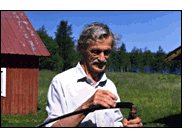 also
an accomplished kantele (zither) player and builder. His other artistic
creations include the Traveller's Cross in Kuivajärvi and the memorial
cross in the old Kalmosaari graveyard. also
an accomplished kantele (zither) player and builder. His other artistic
creations include the Traveller's Cross in Kuivajärvi and the memorial
cross in the old Kalmosaari graveyard.
Kuivajärvi celebrates its village praznika (festival) every summer
at the beginning of July.
Kuivajärvi and Hietajärvi
What to see
Panorama
Audio sample
|
